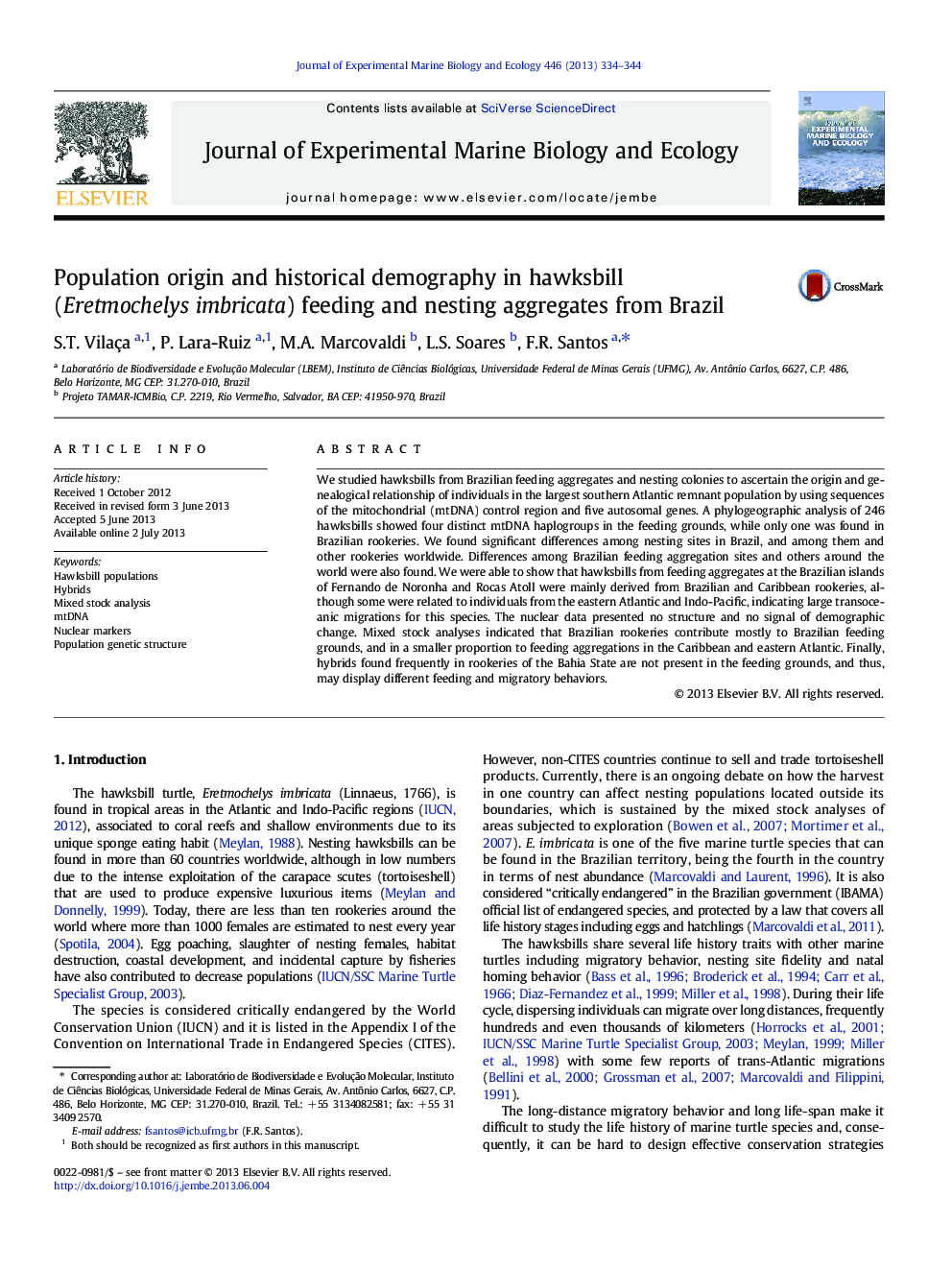| Article ID | Journal | Published Year | Pages | File Type |
|---|---|---|---|---|
| 4395740 | Journal of Experimental Marine Biology and Ecology | 2013 | 11 Pages |
Abstract
We studied hawksbills from Brazilian feeding aggregates and nesting colonies to ascertain the origin and genealogical relationship of individuals in the largest southern Atlantic remnant population by using sequences of the mitochondrial (mtDNA) control region and five autosomal genes. A phylogeographic analysis of 246 hawksbills showed four distinct mtDNA haplogroups in the feeding grounds, while only one was found in Brazilian rookeries. We found significant differences among nesting sites in Brazil, and among them and other rookeries worldwide. Differences among Brazilian feeding aggregation sites and others around the world were also found. We were able to show that hawksbills from feeding aggregates at the Brazilian islands of Fernando de Noronha and Rocas Atoll were mainly derived from Brazilian and Caribbean rookeries, although some were related to individuals from the eastern Atlantic and Indo-Pacific, indicating large transoceanic migrations for this species. The nuclear data presented no structure and no signal of demographic change. Mixed stock analyses indicated that Brazilian rookeries contribute mostly to Brazilian feeding grounds, and in a smaller proportion to feeding aggregations in the Caribbean and eastern Atlantic. Finally, hybrids found frequently in rookeries of the Bahia State are not present in the feeding grounds, and thus, may display different feeding and migratory behaviors.
Related Topics
Life Sciences
Agricultural and Biological Sciences
Aquatic Science
Authors
S.T. Vilaça, P. Lara-Ruiz, M.A. Marcovaldi, L.S. Soares, F.R. Santos,
